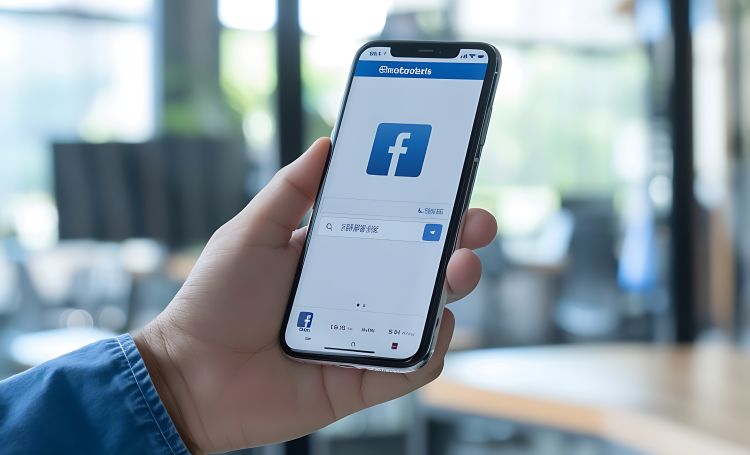** FORMERLY PUBLISHED ON COPYWRITERS.COM 2018-2019 **
If you are like most small business owners, you are well aware of the effectiveness of Facebook advertising and the importance of compliance. But what do you need to know to have Facebook-compliant landing pages?
Let’s face it…
Nothing is more disheartening than receiving a Facebook notification stating, “Your ad was not approved.” Or even worse, “We are shutting down your ad account.”
Most digital marketing managers and media buyers cringe at receiving a message like that. If you are like most, you want to understand how to have Facebook-compliant landing pages…
And how to protect yourself and your business.
First, Let’s Define a Landing Page for the Sake of Clarity.
To simplify, a landing page is where your prospective buyer “lands” after clicking away from your ad. This may be a sales page commonly seen in e-commerce ads.
However, for anyone in the digital marketing field, the landing page often collects email addresses in exchange for something free and of value. Another choice is to take a person to a registration page, offering them information in the educational format of a webinar.
Other terms for a landing page are a squeeze page, opt-in page, or lead magnet page. These are all common labels describing the same thing, so we will refer to them all throughout this article.
A good landing page will grab your prospect’s attention and do so in a captivating and compliant way. The goal, of course, is to scale your campaign to the point of predictable and profitable results.
To ensure this is your desired result, you must show your Facebook ad and landing page to the right audience…
But also have the right structure and language suitable for compliance.
Below, we will discuss seven critical elements for Facebook-compliant landing pages.
Technique # 1: Make Sure That Your Opt-In Page Is Relevant to Your Facebook Ad
The most crucial aspect of your landing page is that it needs to be relevant to your Facebook ad. What does this mean?
This means that the headline and theme of your squeeze page need to make sense to your prospects after they read the ad.
According to TechJury, 48% of marketers build a new landing page for each campaign. This is a good idea because it keeps landing pages relevant to ads.
For example, you wouldn’t want to show a picture of a jacket in your ad and then take the viewer to a landing page with shirts or shoes.
As you may be aware, the core idea of your message is called the “hook.” Your headline is an expression of that hook. All images should support this same idea, giving your page visual continuity.
The same solution you presented in your ad must appear on your Facebook-compliant landing pages, matching its original theme.
Technique # 2: Above All, Follow Facebook’s Rules & Regulations in Their Ad Policies
Your ad must follow Facebook’s terms, conditions, and policies. Likewise, your company’s landing page needs to do the same thing.
Facebook’s compliance rules often change. For this reason, staying current and aware of what is and is not allowed under these rules is essential.
Here are some concepts that Facebook will indeed be watching for when it comes to compliance:
1. Forbidden or shocking content is not allowed.
2. You cannot make misleading claims
3. You cannot call anyone out for personal attributes
4. Clickbait headlines are not allowed (shocking headlines leading to unrelated content)
5. No obvious errors
6. No misleading signs of Facebook endorsements
7. No low-quality or Facebook-banned content
These are some of the most well-known compliance issues marketers are becoming more familiar with. But remember, if it’s not allowed in your Facebook ad, leaving it off your landing pages is also good practice.
The Good News Trending For Small Businesses
But it’s not all bad news. Digital marketers and small businesses are learning to cooperate better with Facebook’s ad policies.
Facebook intends to help us as well.
To illustrate this point, HootSuite shares some exciting news from the founder of Facebook as he describes his 10-year vision. According to this quote, small businesses can expect positive changes in the future:
“Over the next decade, we hope to build commerce and payment tools so that every small business has easy access to the same technology that previously, only big companies have had.”
~~ Mark Zuckerberg, CEO and founder of Facebook.
Anything that helps small businesses is good news! It’s encouraging to know that we are all emerging past the growing pains and into the possibility of a productive movement.
Technique # 3: Make Sure Your Business Shows Itself to Be Trustworthy
In the “old days,” people could say almost anything about advertising. But thankfully, not anymore! Today, more than ever, if your business does not prove itself trustworthy, it will be left far behind those that do.
This applies to everything about your business, and your company’s landing page is no exception. With that in mind, how can you prove credibility in your business?
One of the first ways is to ensure your business landing page is parked on a real domain name. Affiliate links and popular landing page URLs are not allowed.
A good landing page software will allow you to add your domain name or provide a WordPress plugin. This allows you to link your opt-in page to your domain name.
Placing your Facebook pixel is another strategy that is used by most reputable businesses.
This practice is a good sign that you are a professional business and know what you are doing. One reason is the ability to track and re-market to your customers. Another reason is to illustrate your business’s reliability further.
Remember, the More Trust You Build, the More Sales You Make!
“The best marketing strategy ever. CARE.”
~~ Gary Vaynerchuk, who is a speaker and marketing expert.
Testimonials on your Facebook-compliant landing pages are another great way of providing social proof and gaining trust with your prospects. Also, be sure to discuss any doubts your prospects may have. Bullets are a great way to handle objections on your landing page.
According to current trends, a strong value proposition is a sure sign of an honest business. This means that you must offer something of value throughout your campaign.
Another way to prove that you are believable is to gain a good “WOT” score. This stands for “Web of Trust,” and checking your domain score regularly is a good idea.
Technique # 4: Always Keep Your Message Simple & Easy to Understand
A landing page is one place where predictability will work in your favor. Another way of stating this is, “No surprises!”
Your message must fulfill expectations when a prospect lands on your squeeze page. If your ad indicates that they will be watching a video about a certain topic, the landing page needs to bring them one step closer to that goal.
If your ad offers a free book or guide, your opt-in page must support this idea. In other words, be clear about what you sell or give away. Let there be no doubt about what the reader will get in exchange for their email or money.
Objection-handling bullets can and should be different, but they must be easy to understand and always support the main idea.
Technique # 5: Make Sure Your Prospects Have A Pleasant Experience
Once they get to your squeeze page, your prospects must have a positive experience. Remember, this is one of Facebook’s main goals.
They want their users to have enjoyable experiences so that they will come back!
In the end, Facebook would not be in business without users, and neither would the companies that depend on them for advertising. It’s understandable why looking out for the best interest of their users is a smart move.
According to Cardinal Digital Marketing, Facebook had 2 billion users in October 2017. Since then, it has grown to 3 billion people! You may agree that ensuring your business complies with Facebook rules is worth it!
Always Keep Landing Pages Mobile-Friendly
The landing pages must be mobile-friendly if users watch from a mobile phone. They need to be easy to read and navigate from any phone brand.
TrueList says 50% of landing pages are optimized for mobile devices. Based on that statistic, this simple change could give you an extreme advantage!
Thankfully, most credible landing page sites give their customers the choice of mobile editing. But the person building the funnel needs to make sure this happens. If the landing page is not mobile-friendly, this will increase the chances that an ad will get disapproved.
Of course, do not ever shock or scare your readers on your landing page! Always keep it friendly, using language that a person would use when speaking to their best friend.
It’s best to elicit positive emotions or solutions on your Facebook-compliant landing pages. If addressing a fear, focus on the benefits and ways to solve their problems. Always make them feel better, not worse.
Last, ensure it’s easy for your prospect to leave the landing page if they wish to. If your lead magnet page has pop-ups or appears to be leading them to a “dead end,” Facebook will not approve your ad.
Technique # 6: Give Prospects One Clear Call to Action
Ensure your business landing page has one clear “call to action.” Never leave visitors guessing what to do next or where to go. The instructions must be so apparent that the next step jumps out at them from the page.
For example, a large bright button. The language on this button can be in the second person, as in “Here Is Your Free Book,” or the first person, as in “Give Me My Free Book.”
Please do not give them more than one choice. This will confuse the reader, and a confused prospect never buys. Everything about the landing page needs to have one single focus.
As an interesting side note from KlientBoost, 46% of landing pages have more than one offer. But this can decrease conversion rates by 266%. As you can see, giving them one choice puts you at a tremendous advantage over 46% of your competition!
You aim to get them to the “back end” of your funnel, where you can continue communicating with them and offer them more choices. A popular way to do this is to offer an enticing gift on the front end in exchange for their email.
Most of the time, this means sending your prospects to an email auto-responder list. However, one thing Facebook does not allow marketers to do is send them to closed or secret groups. Knowing this, be careful not to make that mistake.
Technique # 7: Facebook Compliant Landing Pages & Legal Disclaimers
It would be best to have legal disclaimers at the bottom of your Facebook-compliant landing pages. Most of the time, the more, the better. But some key disclaimers must be there, with no exceptions.
You should always have a “Privacy Policy” and “Terms of Use” disclaimer. If they apply, the best practice is to include other disclaimers, such as earning and affiliate disclaimers.
You should also include a mailing location and contact information, such as a contact email or phone number. You should also include your copyright information and business description.
Summary
Following the 7 techniques and suggestions above, you should be ready to create Facebook-compliant landing pages. Using these ethical and authentic practices, you position your business as a trustworthy company that cares about your customers.
If you need an experienced copywriter to create your Facebook ads and landing pages, you have come to the right place! We aim to ensure that your campaigns are compliant and that your Facebook advertising scales profitably.
Contact us today if you need help with your Facebook-compliant ads and landing pages!



